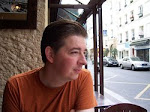Pasqualina Albano led a violent gang in Springfield MA
Justin Cascio's latest book is scheduled for release next month through Amazon. Pasqualina: The Bootleg Queen of Little Italy tells the story of Pasqualina Albano Siniscalchi Miranda, bootlegger and leader of a violent gang in the South End of Springfield, Massachusetts.
A 2020 Justin Cascio video from YouTube discusses Pasqualina Albano:
The gang included members of Pasqualina's extended family - Albanos, Fiores, Santaniellos - and individuals who would become famous as members of the Springfield Mafia, including "Big Nose Sam" Cufari and the Scibelli brothers.
"I’ve told Pasqualina’s story before, at genealogy and history conferences, and as a video on YouTube," Justin remarked in an October 23, 2025, email announcement. "In my new book, I paint a bigger picture of the worlds she inhabited and ruled over, from car chases to church politics."
In addition to telling the surprising story of the woman gang leader, Justin said his book addresses the earliest origins of the Mafia and the unique relationship of the Springfield, Massachusetts, organization with what became known as the Genovese Crime Family of New York.
Justin is an accomplished genealogist and Mafia historian. His highly regarded first book, In Our Blood: The Mafia Families of Corleone,* was released late in 2023. The author's work also appears on his Mafia Genealogy website, a Mafia Genealogy site hosted on Patreon and in multiple issues of Informer: The History of American Crime and Law Enforcement between 2016 and 2023.
Pasqualina: The Bootleg Queen of Little Italy will be available November 10, 2025, in hardcover (expected list price of $26.99), softcover ($17.99) and e-book ($9.99) formats.
* compensated Amazon affiliate link.



















